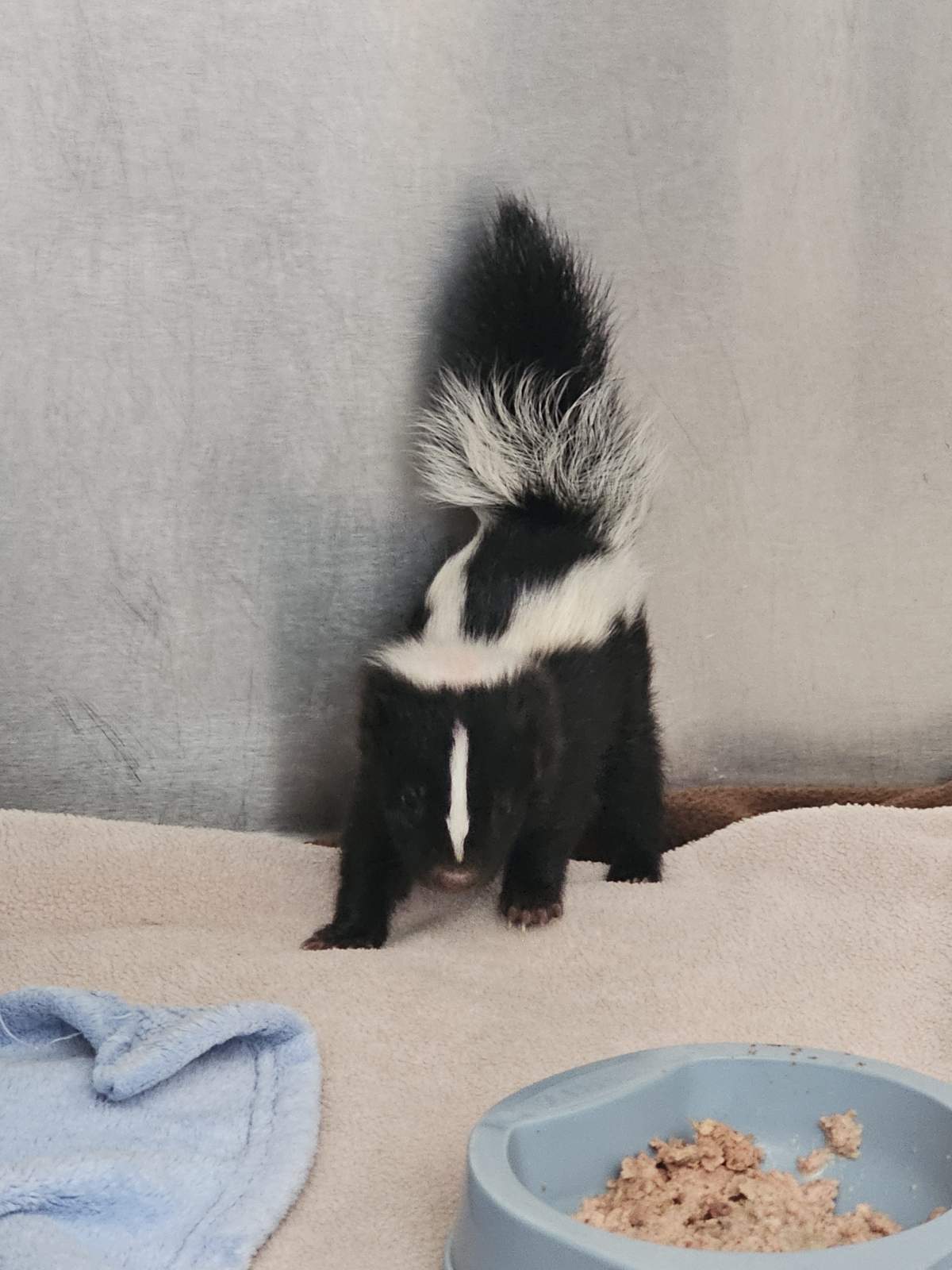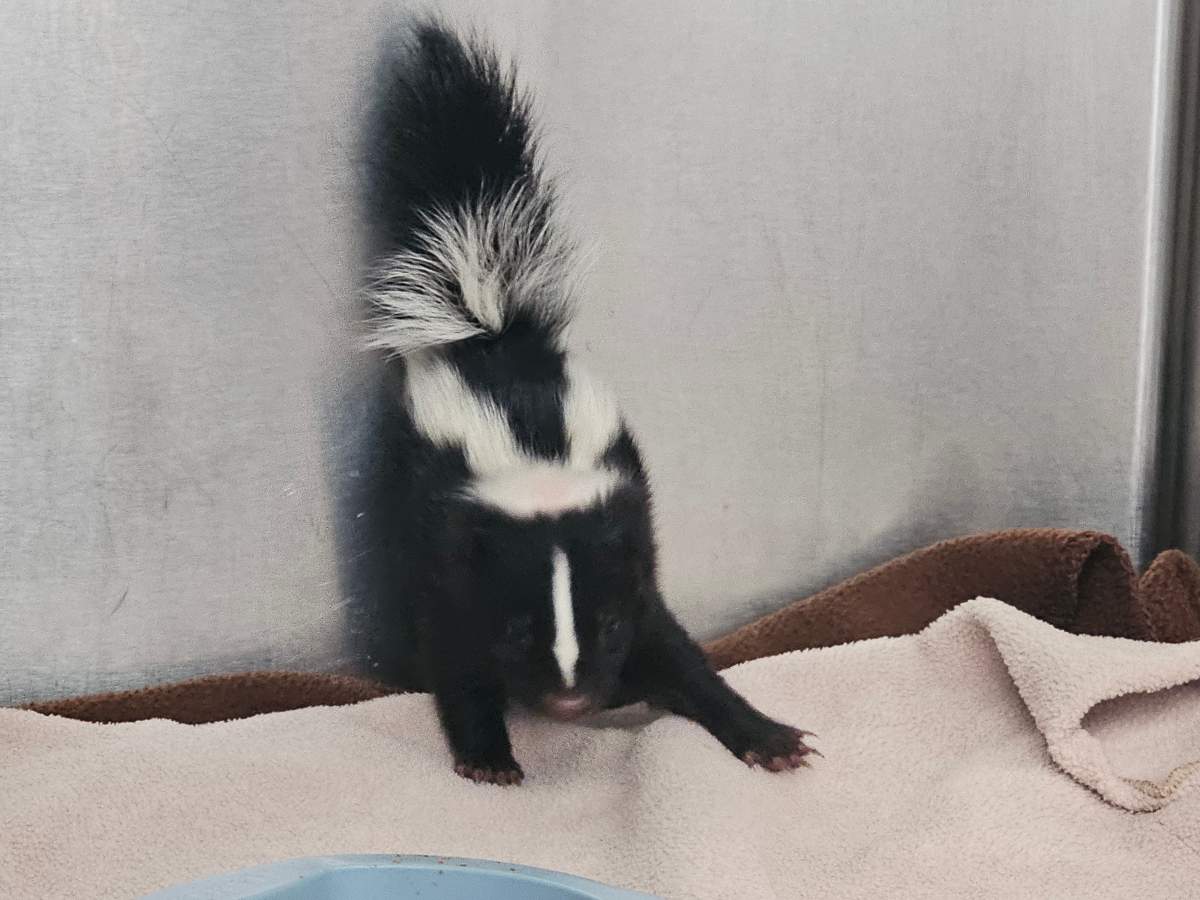It’s a bit of a stinky situation at the Alberta Institute for Wildlife Conservation. A surfeit of baby skunks has taken up residence before the animals can be released into the wild.

“We have 26 skunks currently in care,” said Scottie Potter, communications coordinator for AIWC. “They are all young, little babies. Their mother was actually trapped and then relocated, and then the babies were found afterwards.
“This is a common way in which baby skunks come to us.”
Potter says the kits are adorable to watch.
“It’s quite entertaining to watch them do a threat display when they are that young, because they don’t have any balance,” Potter said.

Get daily National news
“A threat display from a skunk involves little stomps. And when they stomp, they lose a little control and fall over and things like that and it’s really truly adorable.”
But they come ready to defend themselves, Potter said.
“They are already spraying, although they aren’t accurate yet.”
Nicholas Holland is the owner of Peregrine General Pest Control. He said his company captures up to 300 skunks per year in Calgary, but he advises clients to be extra careful this time of year.
“I think you should try and get them all and do the responsible thing. But here’s the message: we have to learn to co-exist with what’s around us.”
Potter said relocating a skunk doesn’t really work unless you block access to front porches or back decks: places skunks find inviting.
“If you are going to relocate a skunk, be aware that could be a mom with babies. But also be aware that if you are not taking measures to block a skunk’s access to an area, you are just inviting another skunk in.”










Comments